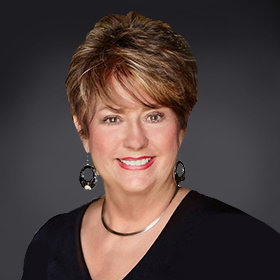Jindal vetoes make mark on session
July 3, 2014Reader: Stop SLFPA lawsuit
July 3, 2014I recently visited a patient in the hospital who was very sick. I shook his hand as I usually do but he wouldn’t let go of me. I let my hand stay in his because I realized he wanted human touch. In our germ conscious society, we sometime hold back one of the greatest gifts we can offer to another person – the gift of healing touch.
Jesus was aware of this power and usually touched the person he was healing or let them touch him. Some examples: “Jesus laid his hands on his eyes” . . . (Mk 8:25) “People were bringing even infants to him that he might touch them” . . . (Lk 18:15) “He could do no deed of power there, except that he laid his hands on a few sick people and cured them.” (Mk 6:5) “All those who had any who were sick with various kinds of diseases brought them to him; and he laid his hands on each of them and cured them.” (Lk 4:4) “When he laid his hands on her, immediately she stood up straight and began praising God.” (Lk 13:13)
One hundred years ago, about 99 percent of babies in orphanages in the U.S. died before they were 7 months old. People deposited unwanted babies in these institutions, where modern antiseptic procedures and adequate food seemed to guarantee them at least a fighting chance for a healthy life. These babies died, not from infectious diseases or malnutrition; these babies died from a completely different kind of deprivation: lack of touch.
When they removed these babies from these large, clean but impersonal institutions to environments where they received physical contact along with proper food, the problem was solved. They gained weight and finally began to thrive. Touch is vital for survival for everyone.
“Volunteer grandparents” who give their time to massage, touch, hold and rock these babies also experience significant benefits: they drink less coffee and make fewer trips to the doctor. When they regularly massage babies, they also have lower anxiety levels, fewer symptoms of depression and improved self-esteem.
Today the power of healing touch is used in many medical institutions including hospitals, long-term care facilities, private practices, hospices and spas.
Many persons in the medical field such as nurses, massage therapists and other health care professionals have taken continuing education programs to learn the technics of healing touch. Healing touch technics are taught in universities, medical and nursing schools, and other international institutions.
Therapeutic touch is practiced by the “laying on of hands” to transfer healing energy to someone who needs it. Certain Asian cultures have long believed that life energy flows through invisible pathways within the body. Traditional Chinese Medicine believes that people can use their own energy to help others.
In the West, the idea of human energy fields can be traced back to the 18th century work of Franz Anton Mesmer, a German doctor who believed that illness was caused by imbalances in the body’s magnetic forces.
He believed he could restore magnetic balance by using soothing words and quieting gestures, a technique he called Mesmerism.
Proponents of touch therapy claim it reduces stress, calms anxiety and depression, decreases pain, strengthens the immune system, enhances recovery from surgery, helps people with neck and back problems, deepens the spiritual connections, supports cancer care, creates a sense of well-being and eases acute and chronic conditions.
Being exposed to a few germs can build up our immune system. We need to include more nurturing touch in the lives of our infants, our children, teenagers, our elders and ourselves. As we grow, our need for touch does not disappear. We continue to benefit from the touch we receive from those who love and care about us.




